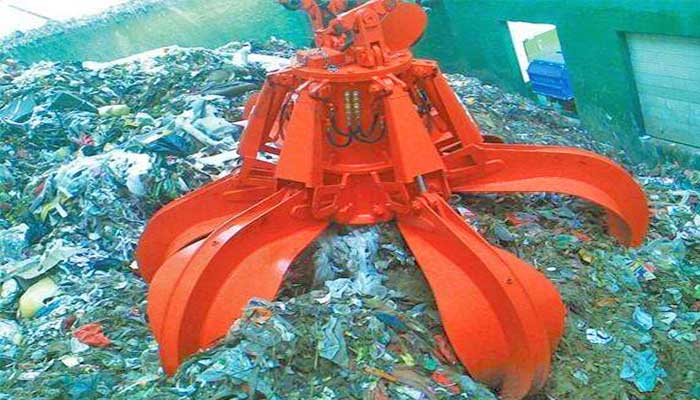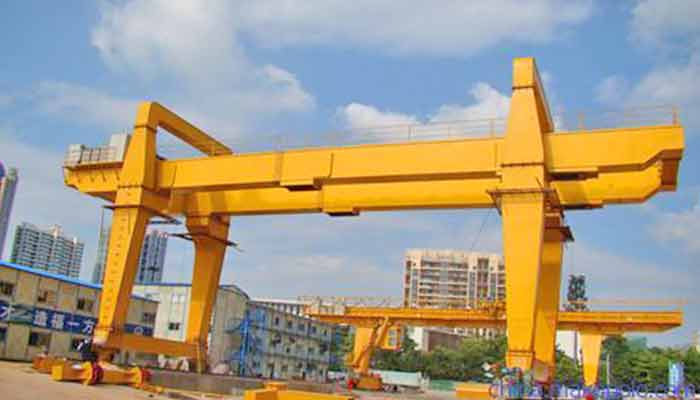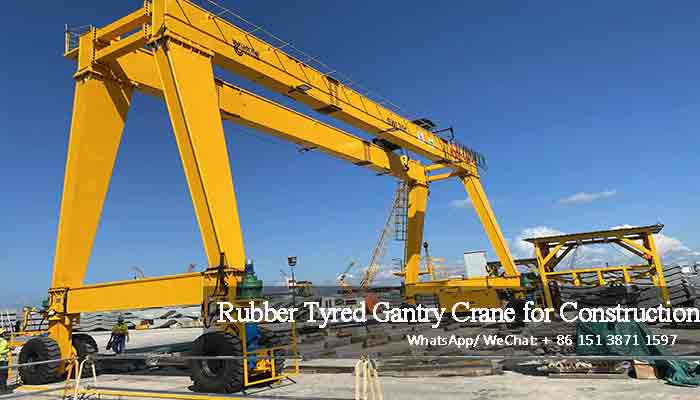Your Trusted Overhead IndustrialCrane Manufacturer & Supplier
The Power of Industrial Cranes: Essential Lifting Solutions Across Multiple Sectors
Industrial cranes are indispensable tools in modern industries, offering efficient solutions for lifting, transporting, and handling heavy loads. These versatile machines are designed to tackle the complex challenges of moving materials in environments where precision, safety, and power are critical. From manufacturing plants to steel mills, construction sites to shipping yards, industrial cranes make it possible to handle large, bulky, and often dangerous loads with ease and safety.
The Critical Role of Industrial Cranes in Modern Industries
In today's industrial landscape, cranes are essential for ensuring smooth operations, maximizing productivity, and enhancing workplace safety. Without cranes, many tasks that involve heavy lifting would be impossible, or at least inefficient and unsafe. Cranes allow businesses to handle materials with precision, moving everything from raw materials to finished goods across factory floors, assembly lines, warehouses, and even outdoor construction sites. These machines are designed not only for heavy lifting but also for durability, efficiency, and adaptability to various working conditions, including extreme environments.
The role of industrial cranes is especially important in sectors that deal with heavy or bulky materials, such as steel production, manufacturing, mining, logistics, and construction. They are crucial for improving operational efficiency by reducing manual labor and the risks associated with handling heavy loads. Additionally, cranes enable the quick and safe transportation of materials, helping to avoid costly downtime and ensuring the timely completion of projects.
Overview of Various Types of Industrial Cranes
Industrial cranes come in various types, each designed for specific applications. The major crane types used in industrial settings include:
- Industrial Bridge Cranes (Overhead Cranes) These cranes are commonly found in manufacturing plants and warehouses. They consist of a bridge that spans the width of a facility, with a hoist or trolley that moves along the bridge to lift and transport heavy loads. Overhead cranes are known for their ability to maximize available space by operating above the work area. They are often used for lifting large equipment, machinery, and materials in a controlled environment.
- Industrial Gantry Cranes Gantry cranes are typically used in outdoor environments, such as construction sites, shipyards, and steel mills. Unlike bridge cranes, gantry cranes are supported by legs that move along tracks, allowing them to lift and move loads across wide areas. They are ideal for handling extremely heavy loads that need to be lifted over long distances. Gantry cranes are often seen in industries such as shipping, logistics, and large-scale manufacturing.
- Industrial Jib Cranes These compact cranes are best suited for smaller, more localized lifting tasks. Jib cranes have a rotating arm (the jib) that extends out from a vertical pillar or wall, allowing them to lift materials in confined spaces. They are commonly used in smaller factories, workshops, and maintenance operations. Despite their smaller size, jib cranes are highly versatile and efficient for handling lighter loads.
- Grab Bucket Cranes Used primarily in industries that handle bulk materials, grab bucket cranes are designed to lift loose materials such as coal, sand, and scrap metal. The bucket grabs hold of the material, allowing it to be lifted and transported to another location. These cranes are essential in ports, steel mills, and cement factories where large quantities of materials need to be moved efficiently.
- Magnetic Cranes Magnetic cranes use electromagnets to lift ferrous materials, such as steel or scrap metal. They are commonly used in recycling facilities, scrap yards, and steel mills, where fast and efficient metal handling is essential. Magnetic cranes allow operators to move large quantities of metal without physical contact, reducing the risk of injury and damage to the materials.
Industrial Crane: All Types of Overhead Cranes Used in Industrial Applications
The term "industrial crane" refers to a wide range of lifting equipment used across different industries to handle heavy materials, machinery, and equipment. This broad category encompasses all types of cranes designed to perform various lifting tasks in manufacturing, construction, logistics, and other sectors. The specific type of crane is chosen based on factors such as the nature of the load, the available space, and the required lifting capacity. Industrial cranes play a critical role in ensuring the safe, efficient, and cost-effective handling of materials.

Industrial Bridge Crane
Industrial bridge cranes, also known as overhead cranes, are specifically designed for lifting heavy loads across long spans within industrial environments. They consist of a bridge that spans the width of a factory or warehouse, with a hoist or trolley moving along the bridge to lift and transport materials. These cranes are often used indoors, providing high lifting capacity and flexibility to move goods over large distances. Common applications include automotive assembly lines, steel mills, and large manufacturing plants, where heavy machinery, raw materials, and finished products need to be moved across the facility.
Key Features:
- High lifting capacity
- Wide span for large indoor spaces
- Can move along the entire length of the facility
Applications:
- Automotive production
- Steel manufacturing
- General heavy manufacturing and warehousing

Industrial Gantry Crane
Industrial gantry cranes are designed to move heavy loads across wide outdoor areas, such as construction sites, shipyards, and steel mills. These cranes consist of a structure with supporting legs that run on tracks or wheels, allowing them to move large loads over long distances. Gantry cranes are ideal for lifting heavy items that need to be moved over open yards or construction zones where other types of cranes might not be practical. They are also commonly used in ports for handling containers and in large manufacturing plants for moving bulky items.
Key Features:
- Can lift and move loads across open outdoor spaces
- Robust design for heavy-duty lifting
- Often mounted on tracks or wheels for mobility
Applications:
- Shipping yards for container handling
- Heavy-duty construction sites
- Steel production facilities

Industrial Jib Crane
Industrial jib cranes are smaller and more compact than other crane types, designed for lifting lighter loads in tight or confined spaces. They feature a rotating arm (jib) that extends from a vertical pillar or wall, allowing the crane to work in localized areas where space is limited. Jib cranes are often used in workshops, small manufacturing plants, or maintenance facilities, where they perform precise lifting and positioning tasks. Despite their smaller size, jib cranes are highly versatile and efficient for handling lighter loads and assisting in smaller-scale lifting applications.
Key Features:
- Compact and space-saving design
- Rotating arm (jib) for localized lifting
- Ideal for lighter, smaller loads
Applications:
- Maintenance and repair workshops
- Small to medium-sized factories
- Localized lifting in confined spaces

Grab bucket cranes are specialized lifting devices designed for handling bulk materials such as coal, gravel, sand, or scrap metal. These cranes are equipped with a bucket that is capable of grabbing and lifting large quantities of loose material. The bucket opens and closes around the material, allowing for efficient transportation across the facility. Grab bucket cranes are commonly used in ports, steel mills, cement plants, and waste management facilities, where bulk materials need to be moved quickly and safely.
Key Features:
- Ideal for bulk material handling
- Grab bucket mechanism for efficient lifting
- Suitable for moving loose, bulk materials
Applications:
- Ports and harbors for bulk cargo handling
- Steel mills and foundries for scrap metal and raw materials
- Cement factories for bulk cement and aggregate handling

Magnetic cranes use powerful electromagnets to lift ferrous metals, such as steel and iron. These cranes are commonly used in recycling centers, scrap yards, and steel mills, where fast and efficient metal handling is essential. Magnetic cranes enable operators to lift and move large quantities of metal quickly and safely, without physical contact with the material. The electromagnetic system provides an easy solution for picking up and placing metal items without the need for additional rigging or manual labor.
Key Features:
- Electromagnetic lifting system for ferrous materials
- Ideal for scrap metal handling and recycling
- Eliminates the need for physical contact with materials
Applications:
- Scrap yards and recycling centers
- Steel production and metalworking
- Heavy metal handling in industrial manufacturing plants
Each of these crane types is tailored to meet the unique needs of different industrial environments. Whether lifting heavy steel beams on a construction site, transporting bulk materials at a port, or handling intricate parts on an assembly line, industrial cranes are essential tools for optimizing material handling, improving productivity, and ensuring workplace safety. Their flexibility, power, and efficiency make them invaluable assets in a wide range of industrial sectors.
Your Trusted Overhead IndustrialCrane Manufacturer & Supplier
Industrial Crane: Industrial Overhead Crane,Industrial Gantry Crane& Industrial Jib Cranes for Various Industrial Sectors
Diverse Applications Across Industries
The versatility of industrial cranes is reflected in their widespread use across various sectors. Each crane type has unique characteristics that make it ideal for specific applications:
- General Manufacturing: Overhead and gantry cranes are commonly used in automotive assembly lines, machinery production, and electronics manufacturing. These cranes move components, tools, and equipment to improve workflow and reduce downtime.
- Logistics and Warehousing: In warehouses and distribution centers, overhead cranes and jib cranes are used for sorting, stacking, and transporting goods. Gantry cranes may also be employed in large logistics hubs to handle containers and bulk materials.
- Steel Production: Gantry cranes and overhead cranes are extensively used in steel mills to transport heavy steel products, scrap, and raw materials. These cranes can handle extremely heavy loads and operate in challenging environments, such as high temperatures and hazardous areas.
- Mining: Industrial cranes in mining operations help transport large machinery, excavated materials, and equipment in open-pit mines and underground operations. They are essential for maintaining safety and efficiency in remote and harsh environments.
- Construction: Gantry cranes and overhead cranes are critical on construction sites for lifting and moving materials like steel beams, concrete panels, and prefabricated components. These cranes ensure that construction projects are completed on time and within budget by streamlining material handling.
In conclusion, industrial cranes are indispensable in modern industry. Their ability to handle heavy loads with precision and safety makes them essential in a variety of sectors, including manufacturing, construction, logistics, steel production, and mining. Each crane type, from industrial bridge cranes to magnetic cranes, is specifically designed to address the unique challenges faced by industries that require heavy lifting, making them invaluable tools for improving efficiency, safety, and productivity across the globe.
Industrial cranes are essential tools for handling heavy materials and improving operational efficiency in various sectors. Each type of crane is designed to meet the specific demands of the job, whether it's lifting heavy loads across vast distances or maneuvering within tight spaces.





























